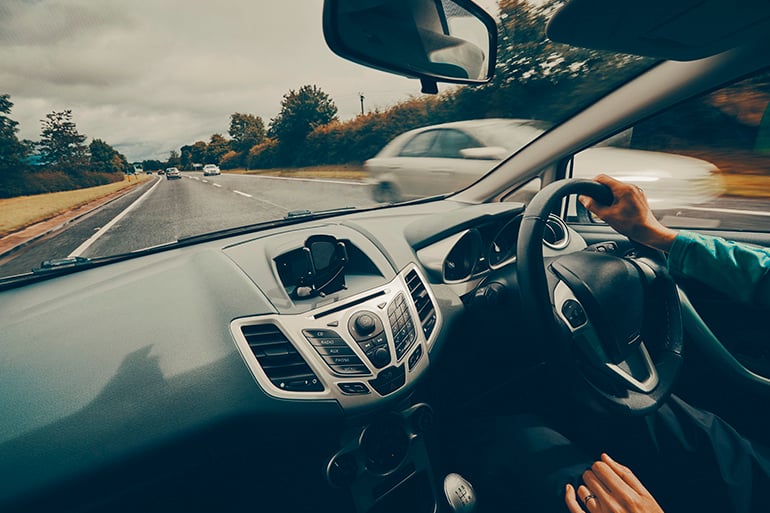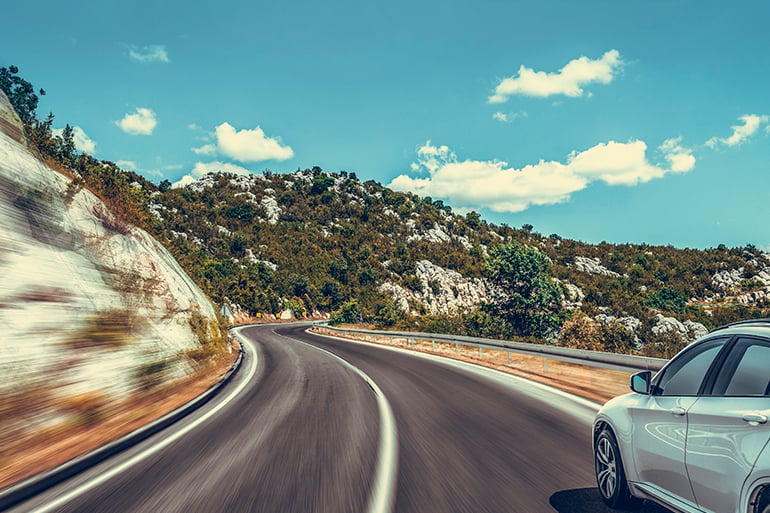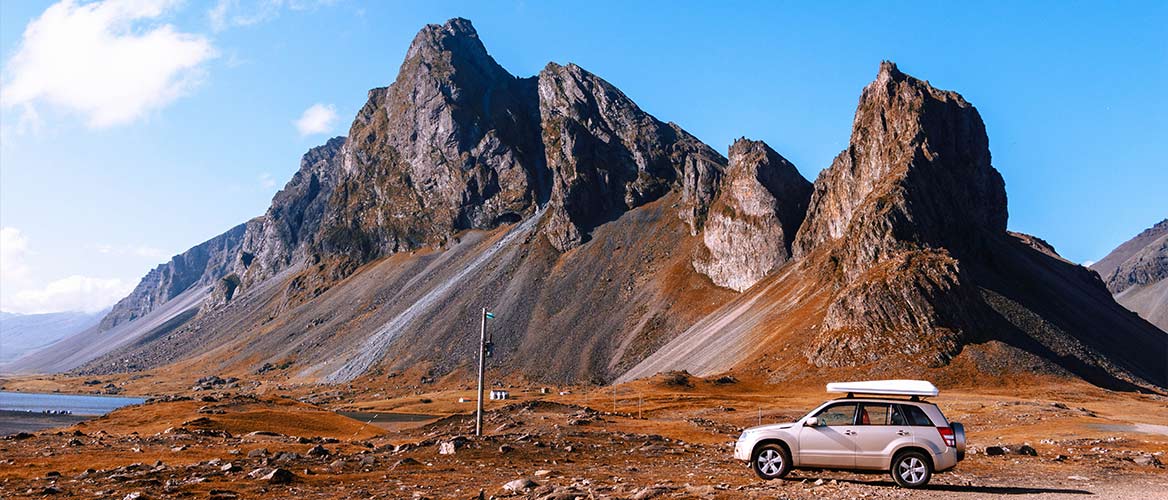September 17, 2025
April 13, 2022
If you are heading to Spain from the UK and you´ve decided to drive over in your UK registered car, there are some rules, tips and tricks that you need to know before you cram everything into the boot and set off on your road trip!
You might think you have everything covered because you have done this trip before, but since Brexit and the UK´s departure from the EU some of the rules and regulations regarding driving a UK registered car in Spain and the rest of Europe may have changed and as the old saying goes, it’s better to be safe than sorry!
In all cases, the first thing to check and have with you on your trip are all the documents relating to proving that you, and your car, are legal to drive. So, although most people worry about packing outfits, flip flops, and sun cream, you really need to focus less on what’s in your suitcase and more on having your paperwork in order.
Prep your paperwork…
About you…
- Your passport
- Proof of Travel insurance - policy number and related documents
- A full, valid photocard driving licence (ideally you should take both your photocard and the supporting paper document– if you don’t have the paper part you can do a licence check by going to the “driving licence” page of the DVLA website to obtain and print the information related to your driving status.
A quick note for teenagers, or families travelling with teenagers, the legal age to drive in Spain is 18, so even if someone in the group is 17 and has a full UK licence, they cannot drive in Spain until they are 18!
About the car…
- The car logbook, otherwise known as the V5C certificate
- Valid MOT and road tax - you can also use the DVLA website to check your “vehicle information”.
- Proof of vehicle insurance
- Proof of European Breakdown Cover - policy number and related documents.
Another thing to be aware of is that, in Europe, you need to carry these documents with you whenever you are driving! You also need to be aware that in EU countries there are also key pieces of equipment that you should carry with you in the vehicle.

Get your car kitted out…
- UK sticker – you need to display a UK sticker on your UK registered car whilst driving in Spain and other European Countries.
- Warning triangle and high-vis jacket – to use in emergency/breakdown situations
- Headlight beam deflectors
- Spare bulbs for headlights/indicators
So, now that you know what paperwork and equipment to pack in the car, what other things do you need to consider…?
First things first, it depends on whether you, or visiting friends or family, are driving a UK registered car in Spain for a short trip as a tourist, or if you are planning to stay for a longer period of time.
Driving a UK registered car as a tourist in Spain
Nowadays, to come to Spain on a tourist visa you must be staying for no longer than 90 days. And the good news is that, if you are coming on holiday, you can drive in Spain using a driving licence that has been issued in the UK for visits of up to 3 months, without needing an international driving permit.
If you plan to stay longer than that it is vital that you check the visa requirements, and the legal implications for driving your own car, as being in a UK registered car and having a UK licence are also affected. (See below)
Driving a UK registered car as a Spanish resident
For those coming long term, who are (or plan to become) legal Spanish residents, you will need to do a number of extra things.
- Re-register your car in Spain – see my recent article for details of this process!
- Pay car import tax – see my recent article for the ins and outs of what this involves!
- Exchange your British driving licence for a Spanish licence.
- Another downfall of the Brexit situation is that you cannot use your UK licence for more than 6 months from the date of your Spanish residency registration, which is the date displayed on your TIE card.
- To continue driving in Spain after this 6-month period, you need to get a Spanish Licence, which unfortunately, means that you will have to take the Spanish Driving Test, despite being a legally recognised driver in the UK.
- This situation may change in the future, as apparently the UK and Spanish governments are still working on re-starting the licence exchange agreement which existed pre-Brexit, where you could simply exchange your UK licence for a Spanish licence.
- The Spanish driving test consists of a practical test and a theory test, where you answer 30 questions in 30 minutes and need to get 27 or above. If you are worried about having to do the test in Spanish, there are companies which can help point you in the direction of English versions of the test.
- For more details you can also visit the DGT (Dirección General de Tráfico) website – which you can access in English by using the select language option.

So, finally after all the official requirements and bureaucratic procedures, here are some technical tips and tricks to help you actually drive your UK registered car in Spain…
Keep yourself right… As you are hopefully already aware, in Spain they drive on the right-hand side of the road, so you will need to ensure you are ready for this, and the challenges it may bring. Make “keep right” your mantra, and consciously repeat these words to yourself when you get in the car, or when you are approaching junctions. You will generally be kept in check by the natural flow of other vehicles in the traffic and it will soon become second nature. However, it can catch you off guard if you are on a quiet road, with no cars to follow, or no oncoming cars on the other side to keep you right, in both meanings of the phrase!
In the driver’s seat… In your own UK car, you will also be at a disadvantage in terms of driving position as the driver seat will be on the right not the left, so you will be closer to the verge of the road, instead of in the middle of it. This will restrict your view, so you need to adapt your driving to allow for this and leave more space between you and the car in front so you can see the wider scene more clearly and you have more time to react. Also, be more careful when trying to overtake as you don’t have the same view of the road ahead as you would when driving on the left. Remember to check your blind spot on the other side to normal! If you have a passenger, get them to help you read the road before swerving into the fast lane to overtake.
Let GPS be your guide… The main thing is to stay focused on the road system and your position in the flow of the traffic. I would highly recommend that you use GPS sat nav to help you. This is because it not only shows you the road network ahead in visual format, reminding you of the flow of traffic, but also helps make actual navigation much easier. If you are trying to manually navigate and drive on unfamiliar roads at the same time it may get you in a panic and cause a lapse of concentration in which you revert to your natural habit of driving on the left. Missing your turn or exit is obviously a way better option than causing an accident and your sat nav can recalculate the journey and get you back on track.
Go with the flow…When driving on the right, the roundabouts work in an anti-clockwise direction, so you need to give way to the left. It is the same for junctions, where you need to check left for traffic coming towards you on your side of the road before pulling out. I would suggest that you approach junctions and roundabouts more slowly and go back to the time when you were learning to drive, and you came to a complete stop and paused to check the road more accurately before you pulled into moving traffic.
The need for speed (awareness) … The speed limits are similar to the UK, however, you need to remember that they are displayed in kilometres per hour, not miles per hour, so don’t get carried away and drive too fast! If you do get caught speeding, the fines can range from €100 - €600 depending on the seriousness of the offence, and you can also be fined for using a mobile phone and not having your vehicle paperwork with you.
On roads in built up areas, the speed limit in Spain is usually 50km/h (approx. 30mph) for cars and motorcycles, unless otherwise specified. On motorways in built-up areas the speed limit is usually 80km/h (approx. 50mph) and on the open road it is usually 120km/h (approx. 75mph). Dual carriageways are usually 100km/h (approx. 60mph).
Claiming that you were confused by the speedo because it is in mph is not a defence for exceeding the speed limit, so make sure you pay attention and know the conversions. Or put km markers on your speedo to help you follow the limits more easily!
So, I think I have covered most of the basic things you need to know about taking to the open roads of Spain in a UK registered car! As I’ve said in previous blogposts, driving in Spain is actually a joy as the motorways seem to be much less congested than in the UK, and you spend less time sitting in heavy traffic.
Whether you are in the driver’s seat or you are the co-pilot, you will enjoy cruising through the changing scenery of different provinces with the freedom to choose where take a pit stop and take advantage of the great food, fabulous wine, and outstanding culture that each region has to offer - as the saying goes…buckle up, you´re in for one hell of a ride!
|
If you are searching for car insurance in Spain, Caser Expat Insurance has the right policy for you! |
.png?width=344&height=67&name=logo_caser%20(2).png)







Let Us Know What You Thought about this Post.
Put your Comment Below.